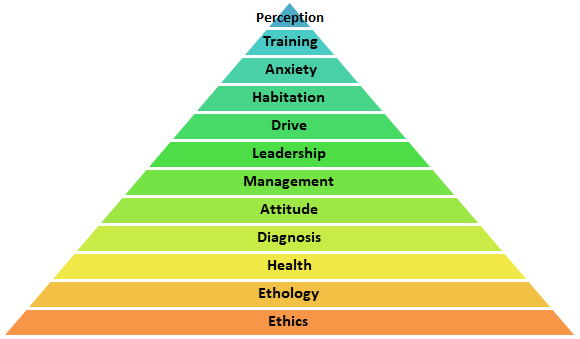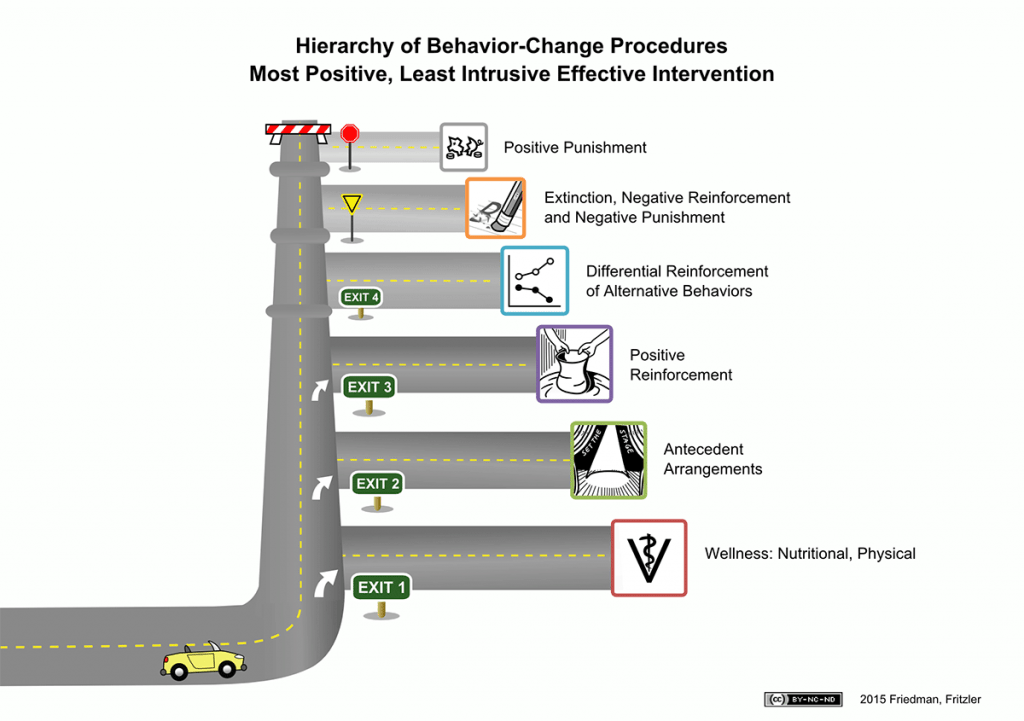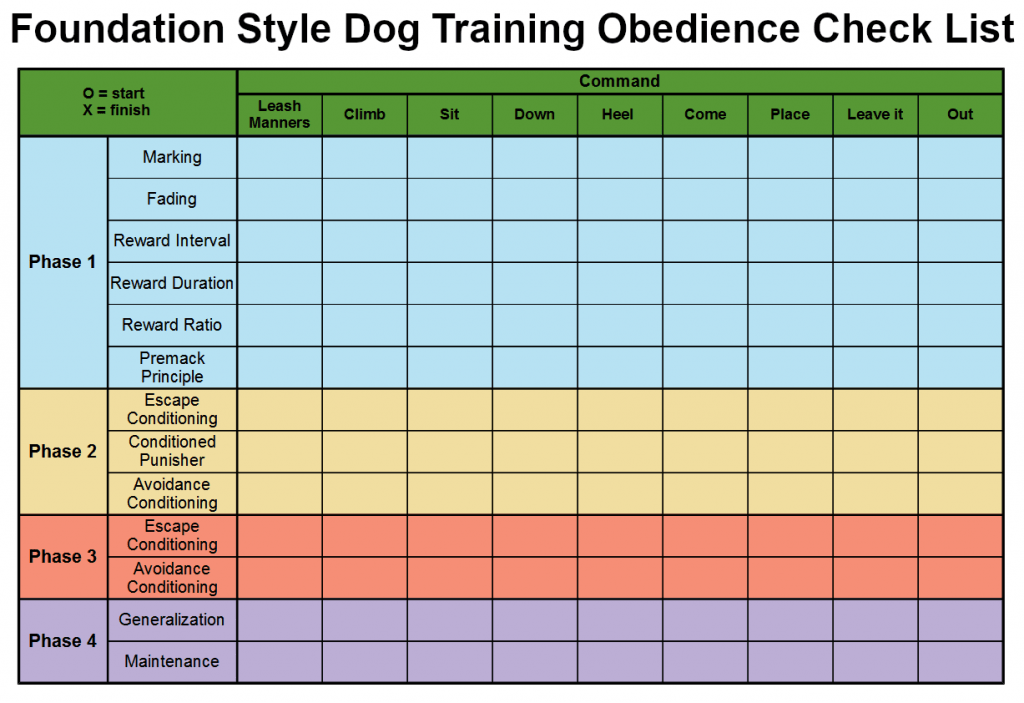
Our Objectives
- Learn what Cynopraxis and LIMA are.
- Learn what LIMA is NOT.
- Understand how adhering to the TRUE meaning of LIMA will:
- make you a more successful dog trainer
- be better for the industry
- reversing or preventing tool bans
- better qualified professionals
- fair marketing
- be better for the general public.
- less abuse
- consumer protection
What is LIMA in Dog Training?
LIMA in an acronym for Least Intrusive Minimally Aversive
The term was coined by Steven Lindsay, described in volume 2 and volume 3 of "Applied Dog Behavior and Training". (links to his volumes are at the bottom of the page)
Lindsay considers himself a "cynopraxic" trainer.
His description:
Cynopraxic training proceeds on the assumption that dogs and people possess a shared capacity to establish relations based on fair exchange. Such training promotes cognitive, emotional, and behavioral changes conducive social competence, cooperation, and play. Cynopraxic training objectives are governed by two essential social and life experience criteria: (1) enhance the human-dog relationship and (2) improve the dog’s quality of life.
Here is another trainer's interpretation in more layman's terms: Here (Robert W. Vaughan and German Shepherd) Adventures
LIMA is a measure of competence for cynopraxic trainers and helps create a framework to dictate how and when they will use different techniques.
These are all the mentions of LIMA within his textbooks. I placed some of his text in bold to highlight points in my notes. I put some of his important text in red. I wrote my own words in blue:
Please use these notes to form your own opinion about LIMA, based on the real literature, and not someone else's rewritten version.
Steven Lindsay's definition of LIMA (from volume 3):
Correction procedures should not be used lightly or haphazardly. The rule of thumb is to select the least aversive and intrusive procedure that is reasonably expected to succeed. According to the least intrusive and minimally aversive (LIMA) model, aversives are ranked in terms of their relative severity and intrusiveness, requiring that the trainer apply a less aversive technique before advancing to a more aversive one (see Compliance in Volume 2, Chapter 2). Adhering to this model and selection process ensures that the least necessary and sufficient aversive procedure is used to produce the intended behavioral objective. In addition to minimizing the potential for producing pain and discomfort, correction procedures should be governed by a principle of minimal intrusiveness. Training procedures should intrude minimally on the human-dog bond and avoid adversely affecting the dog’s quality of life. Overly constrictive restraint and confinement techniques should be avoided in favor of techniques that most rapidly and humanely achieve training objectives without causing undue distress or discomfort to the dog.
From Volume 2:
In addition to avoiding recommendations that may potentially harm the relationship between family and dog, training recommendations should not present risks of injury to the owner or dog. Although well-timed corrections can be highly effective and expedient, recommendations involving the hitting and hanging of aggressive dogs (Koehler, 1962; Hart and Hart, 1985a) should be avoided. Not only are such methods of questionable efficacy, they may actually significantly worsen the situation if improperly performed and, perhaps, cause the owner to be bitten or cause physical injuries to the dog...
By focusing on tools, it takes away the focus from violent and dangerous techniques that do not require the use of a tool.
...In conclusion, both excessively intrusive and aversive techniques may adversely affect owner compliance or violate humane standards of practice. Cynopraxic trainers should make an effort to conform their training interventions to the LIMA (least intrusive and minimally aversive) principle by employing procedures that represent the least necessary intrusion upon the human-dog bond and cause the dog a minimal amount of discomfort, as necessary to achieve the behavioral objective. Further, training recommendations should do no harm to the human-dog relationship, to the dog, or to the owner in the process of implementing them.
Rather than dictating a one-sided program that cannot be realistically implemented by the family, the cynopraxic counselor should work with the family in a spirit of teamwork to find a common solution. Toward achieving this aim, the counselor should listen to the family’s needs and be creative. Just as it is certainly true of dogs, people are individuals possessing unique strengths and weaknesses that need to be recognized and integrated into the training plan. Good cynopraxic counselors know how to work well with both people and dogs.
Lindsay is placing equal weight to the misuse of aversives and unrealistic plans that are "one sided". He stressed that we should consider the uniqueness of each situation. Our goal is to find a solution.
From Volume 3:
Aversive procedures should only be used to achieve cynopraxic objectives not otherwise attainable by nonaversive means alone. Further, all training procedures that produce discomfort, startle (sounds, verbal interrupters, etc..), or loss (negative punishment, including isolation and cold-shouldering)) should be applied in adherence to the LIMA principle and the dead- dog rule (see Hydran-Protean Side Effects, the Dead-dog Rule, and the LIMA Principle in Chapter 10).
This is where most organizations emphasize the definition of LIMA as mainly based off of the first sentence in that paragraph
In addition to avoiding training procedures that are needlessly aversive, cynopraxic trainers avoid procedures that intrude excessively upon a dog’s freedom incentive (see Hydran- Protean Side Effects, the Dead-dog Rule, and the LIMA Principle). Training efforts that inappropriately restrict a dog’s ability to initiate goal-directed behavior not only adversely impact the dog’s QOL but often do so without contributing any real therapeutic benefit. For example, inappropriate restraint or isolation, pointless deprivation procedures, intrusive rules of interaction, and tedious extinction and training rituals may be of little positive benefit with respect to training goals but impose time-consuming hardships on the owner, impede the bonding processes, and impair the dog’s ability to adjust, perhaps making the problem worse. Although highly intrusive procedures do not generate physical pain, they can produce significant emotional pain and distress while augmenting interactive conflict.
The dangers of excessive negative punishment and removing the dog from situations instead of addressing the situations in a timely manner, again, is emphasized.
Despite obvious limitations and risks, aversive procedures are a necessary aspect of dog training and behavior-problem solving that cannot be neglected or substituted for (e.g., by drugs) when competent inhibitory control over highly motivated behavior is being established.
Aversive procedures are a necessary aspect of dog training, hence why he calls for competency and thoughtful use of ALL punishment, both positive and negative.
The LIMA principle addressed the excesses and abuses that might arise when aversive or intrusive dog-training procedures are implemented. As such, it applies to both positive and negative punishment, and covers procedures that generate states of emotional pain and deprivation (e.g., long-term cold shouldering, crate confinement/isolation, and various restraint techniques). The LIMA principle entails that trainers use the least intrusive and minimally aversive technique likely to succeed in achieving a training objective with minimal risk of producing adverse side effects. Essentially, the LIMA principle is a competency criterion, since only competent trainers possessing the necessary know-how can make the required assessments and have the skills needed to ensure that the least intrusive and aversive procedure is in fact used. To speak of the effective and humane use of dog-training procedures in the absence of competency criterion borders on the ridiculous. Accordingly, incompetent uses of attractive and aversive motivational stimuli to modify dog behavior are liable to produce harmful effects that violate the dog’s interests and breech the trust of the responsible dog owners seeking help.
Cynopraxic trainers acknowledge and respect the dog’s preference for pleasure by advocating the use of procedures that utilize reward and minimize punishment. However, to train a dog to a reasonable degree of reliability, the use of both attractive and aversive motivational incentives is an inescapable fact of life.
No where does Lindsay mention prong collars or ecollars in his statements about LIMA. Both of these tools he mentions in volume 1.
These tools are used so less physical force can be used and are considered less aversive than other methods, with less side effects than alternatives if used correctly, when appropriate, by a competent trainer who understands LIMA.
From volume 1 (on e-collars)
A device for delivering remote punishment that has considerable usefulness is the remote- activated electronic collar. Remote electronic stimulation provides a means for delivering a well-timed and measured aversive event. In many ways, it represents an ideal positive punisher, having many potential applications in dog training. In addition to intractable barking problems, dangerous habits such as chasing cars and bicyclists, various predatory behaviors, persistent recall problems, and refractory compulsive habits—all are often responsive to training efforts utilizing an electronic collar. Tortora (1983) has advocated the use of electronic training in the management of certain forms of aggression.
Ideally, the electronic collar should possess several operating features: (1) a variable shock intensity adjustable from the transmitter and collar, (2) a warning and safety’ tone built into the collar, and (3) reliable operation and range. Little in the dog-behavior literature has been written on the use of shock in dog training or behavioral management, perhaps reflecting the stigma attached to its use, yet limited professional use of such collars is definitely warranted and justified (Vollmer, 1979a, 1979b, 1980; Tortora, 1982, 1983). There are many potential complications in the use of shock for the suppression of behavior, including the possibility* of evoking redirected and pain-elicited aggression (Azrin et ah, 1967; Polsky, 1998). Notwithstanding the potential for abuse and undesirable side effects, limited professional use of remote electronic collars is definitely warranted and justified. What may not be justifiable is their current widespread use by dog owners with little behavioral background or experience. There is a considerable risk for abuse when such collars are placed into naive and inexperienced hands.
On prong Collars (volume 3):
The prong collar features a high degree of adjustability by way of removable prong links that are positioned to press into a dog’s neck as the leash is pulled back (see Figure 1.4). A chain with two opposing rings (the center ring and swivel ring) closes the collar with an action similar to that of the martingale collar. The prong collar can be converted into a martingale collar by turning it around so that the prongs face away from the dog’s skin. The leash is attached to the swivel ring. The center ring on the reciprocating chain slides from side to side. The side-to-side action of the central ring serves to direct prong pressure differentially to different parts of the dog’s neck. When pulled straight back, the chain causes the prong collar to close evenly around the dog’s neck. When the leash is pulled toward the right, the center ring shifts position and catches on prong links that direct most of the leash pressure to the left side of the dog’s neck, causing it to move to the right in a highly controlled way. These actions and effects are useful for shaping and polishing precision heeling. The proper use of the prong collar as a shaping and polishing tool requires significant instruction, but with respect to basic control uses novice trainers can rapidly master the prong collar. It is frequently used to train high-spirited working dogs.
How did Susan Friedman's humane hierarchy hijack LIMA?
Article from Susan Friedman showing thoughtfulness: Here
APDT
https://apdt.com/about/about-lima/
https://apdt.com/about/position-statements/
IAABC:
https://m.iaabc.org/about/lima/
Pet Professional Guild:
https://www.petprofessionalguild.com/PPG-Best-Practices
Important FSDT Charts to support LIMA
Links to Steven Lindsay's Books:








Nice … I love it. Got something to watch tonight if I have time hopefully. I was hoping I’d find this somewhere since I did not see it on the DTC website but you had told me about it.
I was just thinking about it yesterday when reading up on LIMA in the Lindsey Bible.
You need to login in order to like this post: click here